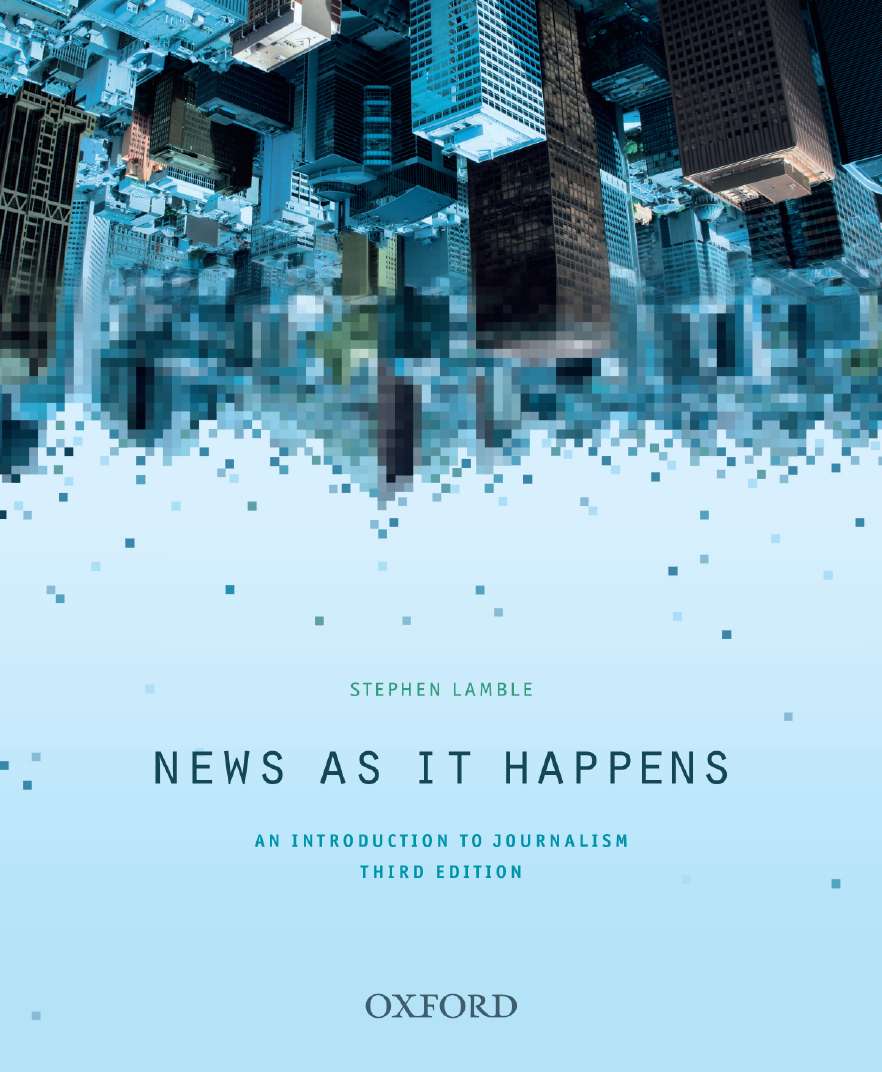News as it Happens eBook

News as it Happens eBook
|
ISBN: |
9780190303754 |
|
Binding: |
Ebook |
|
Published: |
8 Aug 2016 |
|
Availability: |
Available
|
|
Series: |
$97.95 AUD
$112.99 NZD
Add To CartOther options: Paperback $99.95 AUD $113.99 NZD Ebook Rental $51.95 AUD $58.99 NZD
Request an inspection copyDescription
News As It Happens reflects this change, offering practical guidelines for working as a journalist in an age of rapidly evolving media technologies. It provides students with a strong foundation that can be used across the breadth of their studies and helps them aquire specific skills required in working across all media platforms.
The third edition has been thoroughly updated with contemporary examples and latest data, and is rich with activities and tips to help new journalists adapt and thrive.
Key Features
- ‘News practice points’ at the end of each chapter encourage readers to reflect on issues and develop their practical journalistic skills
- ‘Practitioner profiles’ from some of our most respected journalists, including Leigh Sales, Virginia Trioli and Nick McKenzie, offer perspectives on today’s journalism
- Margin notes, a glossary of journalism and online terms, and recommended reading suggestions are included to support and further learning
New to this Edition
- New chapter on ‘Dealing with Spin and Difficult Situations’
- Updated content, data and examples throughout, including topical discussion of wellness blogger Belle Gibson, the 2015 Nepal earthquake and metadata retention laws
- Additional practitioner profiles including Emma Field (The Weekly Times), Amelia Brace (Channel 7), Mark Willacy (ABC) and Amy Remeikis (Fairfax Digital)
Contents
Authors
Stephen Lamble is a journalist, academic, author, and teacher. A recipient of national awards for journalism curriculum development and excellence in university teaching, he is Adjunct Professor of Media Management at the University of the Sunshine Coast. He has previously worked as a senior staff journalist, investigative journalist, feature writer, photojournalist, sub-editor, and editor.
Lecturer Resources
- Instructor’s Resource Manual including notes for lecturers and tutorial activities
- PowerPoint slides